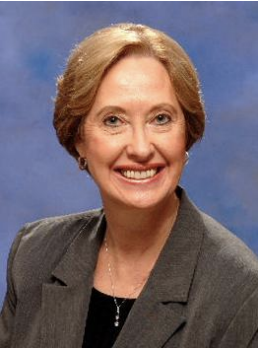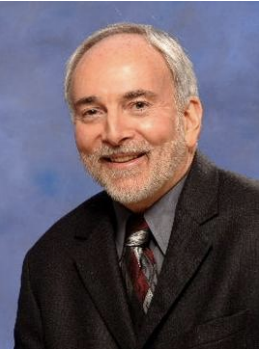The First Report & Order on AM Revitalization


[October 2015] They have been talking about it for years, and pressure has been building for the FCC to “do something” to help AM Broadcasters.
Now that the First Report & Order has been released, along with a Further Notice of Proposed Rule Making and a Notice of Inquiry, some of the FCC’s intentions for AM can be seen. Will it be enough to make a difference? Or is it more of an AM Revenue Revitalization program than true technical help? Let us see.
A high level of interest and anticipation has existed in the Broadcast Industry and the press regarding steps that the FCC could take to improve the lot of AM broadcasters.
The process has been in the making for years, even as Commissioner Ajit Pai took on AM Revitalization as his mission, seeking to add other Commissioners in favor. In recent months, the focus has been on requests – demands, even – that the FCC set up a “Special Window” for AM stations to get more FM translators as the best way to help AM.
On Friday, October 23, 2015 the FCC released its First Report and Order, Further Notice of Proposed Rule Making And Notice of Inquiry, which contains 74 pages of what the Commission is doing at this time, and lays out its plans for future changes to the Rules. Here we want to focus on decisions set forth in the Order portion of the Notice which opens translator opportunities and specifies changes that may provide relief for authorized AM stations.
What is Not in There
Let us start by briefly touching on what is not part of the Order at this time.
First, not mentioned in the Report and Order are some longstanding requests from the AM community that include improving PSA and PSSA authority with some modest power to allow daytimers to properly serve their communities in morning and afternoon drive.
And there is nothing mentioned about dealing with the increasing RFI, especially from Part 15 devices.
There also is no change at this time to the current rule requirement that an FM translator 60 dBu coverage contour must lie within the AM station 2 mV/m (daytime) contour and a 25 mile radius (40 kM) of the AM transmitter site.
At the same time, we note the Further Notice proposes the 1 mV/m coverage contour of an FM translator used by an AM station not extend beyond a radius of 40-miles (64 km), centered at the AM transmitter site, or the 2 mV/m contour. This would increase the distance in the current rule of only 25 miles or the 2 mV/m of the daytime contour.
If adopted, this modification to the current rule could be helpful to some AM broadcasters.
What You Can Plan To Do
What are the FM translator opportunities specified in the Order at this time?
Perhaps first and foremost, the Commission directed the Media Bureau to open two “modification” Windows in 2016. These would allow AM licensees or permittees to acquire and relocate one – and only one – authorized FM translator in the 92.1 – 107.9 MHz band located up to 250 miles from the AM transmitter site and propose to move it and operate on any frequency in the 92.1 – 107.9 MHz band as a minor change.
At this point, a proposed translator must meet the current 74.1201(g) requirements (the 60 dBu /1 mV/m contour of an FM translator rebroadcasting an AM radio broadcast station must be contained within both the 2 mV/m daytime contour of the AM station and a 25-mile (40 km) radius centered at the AM transmitter site), as well as the standard requirements set out in Part 74 of the Rules for any FM translator operating in the non-reserved band.
And this is highly important: these filing opportunities are on a first-come, first-served basis. What this means in practice is that if applicant “A” files to move a translator to Chicago specifying 107.9 MHz on the first day of the Window and applicant “B” files on the second day to use 107.9 or 107.7 MHz in Chicago, the odds are high that applicant “B”’s application will violate the contour overlap rules and be dismissed.
Whether amendments will be permissible between applicants whose applications were filed on the same day is unknown at this time and may require further clarification by the Commission.
The 2016 Windows
As stated, there are to be two Windows in 2016:
2016 Window #1 – This filing Window be in the first Quarter of 2016, last for six months, and is open only to Class C and D AM stations (Class C stations are those operating on 1230, 1240, 1340, 1400, 1450 and 1490 kHz. Class D stations are stations which have no nighttime operation or a nighttime power of less than 250 Watts and, if less than 250 Watts, a nighttime field intensity of less than 141 mV/m @ 1 kM.)
Note that one and only one translator application may be filed for by each station.
2016 Window #2 – This filing Window will last for three months and open as soon as the first Window closes. It is open to all AM stations including any Class C or D stations that did not file in the first Window. Note that, again, only one translator application can be filed for by each station.
Also note that any translator that is authorized to be relocated or modified under this process will carry a condition that the translator must rebroadcast the original AM station applicant for a period of four years. The translator cannot rebroadcast another AM station for this initial four year period.
And the 2017 Windows
The Commission is also directing the Media Bureau to open two new FM translator Auction Windows beginning in 2017. These Windows will not be open to AM stations that filed to 3 move an FM translator in one of the 2016 filing Windows.
Like the 2016 Windows, applicants for a new translator in the 2017 Windows will be limited to one, and only one, FM translator in the 92.1 – 107.9 MHz band.
2017 Window #1 – This 2017 filing Window is expected to be open for a relatively short period of time – possibly two weeks as a guess – and, as with the first 2016 Window, will be open only to Class C and D AM stations. Also as with the 2016 Windows, each station can only file for one translator.
2017 Window #2 – This filing window will also be relatively brief and will open after applicants in the first Window have resolved any mutual exclusivity, settlement and permit issues. This Window will be open to all AM stations, including any Class C or D station that did not receive a grant in the first Window. Once again, each station can only file for one translator.
Additionally – and this is an important point – any translator relocated or modified under this auction window process will permanently link the translator license to the AM station.
One more note: only non-reserved channels are eligible for either the 2016 or 2017 filing Windows, regardless of whether the AM is a commercial or NCE facility.
New Rules From the NPRM
The Windows are not the only thing the FCC has set in motion.
The Commission further acted on parts of the NPRM, while designating some other aspects to be subject to further comment from the industry.
Daytime Contour Changes
The Commission proposed in the NPRM to reduce the requirement for existing daytime stations to provide 5 mV/m service to either 80% of the area or population of a station’s community to 50% of either the area or population.
This relaxation only applies to currently licensed stations. As currently set out, applicants for new stations or modification of a CP for an unbuilt station are not eligible for the relaxed coverage requirements.
The FCC has adopted this proposal as specified in the NPRM.
Nighttime Contour Changes
The Commission also proposed in the NPRM to delete the current requirement for nighttime service to the higher of 5 mV/m or the nighttime interference-free service over either 80% of the area or population.
This change is for currently licensed stations. Applicants for a new station or AM stations seeking a change in community of license must propose service to 50% of the area or the population of the community.
The FCC has adopted this proposal as specified in the NPRM.
Elimination of the Ratchet Rule
In the NPRM, the FCC proposed to delete the so-called “Ratchet Rule.”
This rule required an application for modification of existing night facility to reduce its existing interfering signal to another station by 10% if it was already in that station’s NIF. This disadvantaged stations proposing facility modifications and was often waived by the FCC staff even prior to the NPRM.
The FCC has adopted the proposal as specified in the NPRM.
Modulation Dependent Carrier Level Control
Stations have been allowed to seek waiver of the rule to use these technologies for some time. The NPRM proposed amending 73.1506(a) of the Rules to provide for use of this technology.
The FCC has adopted the proposal as specified in the NPRM.
AM Antenna Efficiency Standards
In the NPRM, the FCC proposed to reduce the current AM efficiency standards by 25%, and has now adopted the proposal as specified in the NPRM.
This is a practical and potentially important benefit for AM broadcasters as it provides for reduced tower and/or ground system height and length which may aid in relocation efforts.
We note that the Commission had directed the Media Bureau to entertain requests by existing AM Broadcasters for experimental authorizations to operate with antenna systems that do not meet the relaxed efficiency rule, provided they can demonstrate no interference to other stations and stability of the system.
What Comes Next
There is more.
While you are digesting all these changes and the effects they may have on your stations, the Commission continues looking at issues like reducing protections to Class A stations, modify Antenna Proof rules, and still more.
We plan to address this portion and other ambiguities of the Public Notice shortly and encourage all AM Broadcasters to follow the proceeding as significant facility improvements may be possible as a result of high broadcaster participation in the ongoing comment and reply comment process.
This Report & Order clearly was truly a compromise effort to get all this out at all and it shows it. But, it does open up potential opportunities for AM stations to get translators and there are some things that will help AM stations.
– – –
Laura M. Mizrahi and Clarence M. Beverage are principals at Communications Technologies, Inc. in Marlton, NJ. You can contact them at lmizrahi@commtechrf.com or CBeverage@CommTechRF.com
